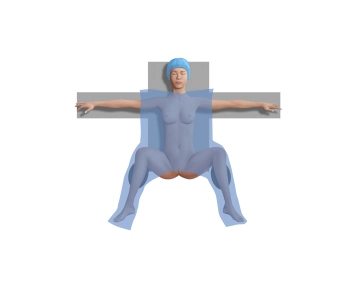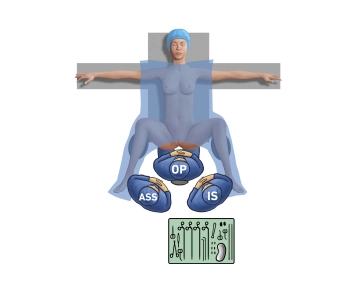Stapled transanal rectal resection of the rectum (STARR) has become a surgical option in the treatment of obstructed defecation syndrome (ODS - also known as outlet obstruction). The STARR technique is intended to reduce rectal intussusception (=internal rectal prolapse) and/or rectocele as the morphological cause of outlet obstruction by combining transversal tightening of the rectovaginal septum by the stapled suture line with annular rectal mucosal resection.
Defecation disorder in the sense of outlet obstruction is a form of chronic constipation. It is a high-incident pathology that significantly restricts the quality of life of many people.
The causes are many and varied: On the one hand, stenoses in the anal and lower rectum may impair defecation. On the other hand, there will be dysfunctions of the pelvic floor itself.
Pelvic floor dyssynergia, i.e. paradoxical contraction of the puborectal muscle and anal sphincter during defecation, and anismus (involuntary, uncontrollable, spontaneous contraction of the pelvic floor muscles) are regarded to be the most important functional causes.
Frequent morphological abnormalities of the pelvic floor in defecation disorders are rectoceles, intussusception of the distal rectum and enteroceles/ sigmoidoceles (prolapse of loops of the small intestine or sigmoid into the lower Douglas pouch, especially after hysterectomy and as part of a general prolapse problem). Mechanical occlusion is attributed to rectocele and intussusception.
Enterocele/sigmoidocele and genital prolapse are possible extrarectal causes. Stool retention in the pendulous sigmoid (cul de sac) and compression of the rectum by this segment of the colon may result in a defecation disorder.
The clinical significance of the various morphological abnormalities has not yet been fully understood.
Since correction of morphological abnormalities does not necessarily improve function, surgical intervention should be considered only after conservative treatment has failed or been ineffective.


